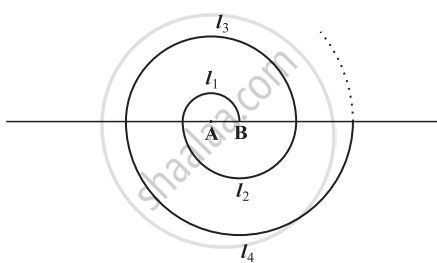Advertisements
Advertisements
Question
Find the sum (−5) + (−8)+ (−11) + ... + (−230) .
Solution
(−5) + (−8)+ (−11) + ... + (−230) .
Common difference of the A.P. (d) = a2 - a1
=-8-(-5)
=-8+5
=-3
So here,
First term (a) = −5
Last term (l) = −230
Common difference (d) = −3
So, here the first step is to find the total number of terms. Let us take the number of terms as n.
Now, as we know,
an = a + (n-1) d
So, for the last term,
- 230 = -5 + ( n-1) (-3)
- 230 = -5-3n + 3
-23 +2 = -3n
`(-228)/(-3) = n`
n = 76
Now, using the formula for the sum of n terms, we get
`S_n = 76/2 [2(-5) + (76-1) (-3)]`
= 38 [-10+(75)(-3)]
=38 (-10-225)
= 38(-235)
= -8930
Therefore, the sum of the A.P is Sn = -8930
APPEARS IN
RELATED QUESTIONS
A spiral is made up of successive semicircles, with centres alternately at A and B, starting with centre at A of radii 0.5, 1.0 cm, 1.5 cm, 2.0 cm, .... as shown in figure. What is the total length of such a spiral made up of thirteen consecutive semicircles? (Take `pi = 22/7`)

[Hint: Length of successive semicircles is l1, l2, l3, l4, ... with centres at A, B, A, B, ... respectively.]
Three numbers are in A.P. If the sum of these numbers is 27 and the product 648, find the numbers.
How many terms of the A.P. 63, 60, 57, ... must be taken so that their sum is 693?
Find the sum of all natural numbers between 1 and 100, which are divisible by 3.
Find the sum of the first 40 positive integers divisible by 5
Write the nth term of an A.P. the sum of whose n terms is Sn.
The first and last terms of an A.P. are 1 and 11. If the sum of its terms is 36, then the number of terms will be
If Sn denote the sum of the first n terms of an A.P. If S2n = 3Sn, then S3n : Sn is equal to
The sum of the first 15 multiples of 8 is ______.
Which term of the AP: –2, –7, –12,... will be –77? Find the sum of this AP upto the term –77.
